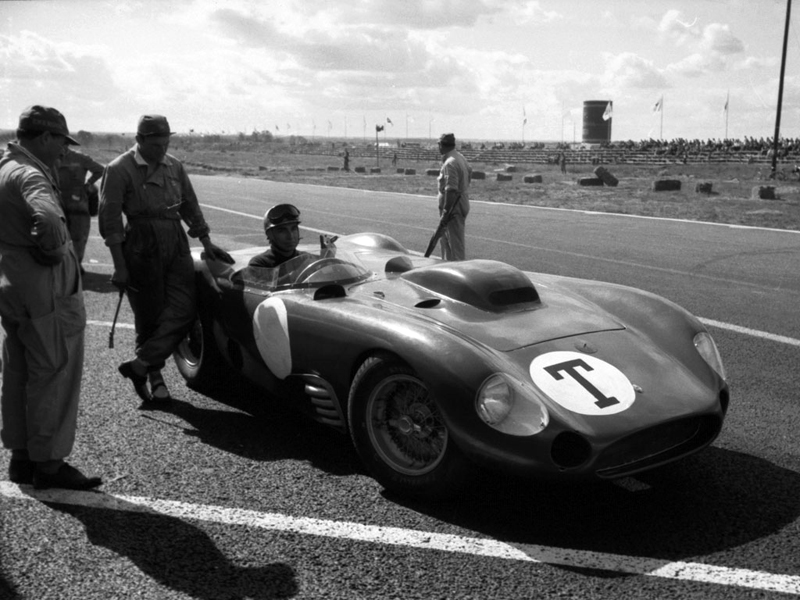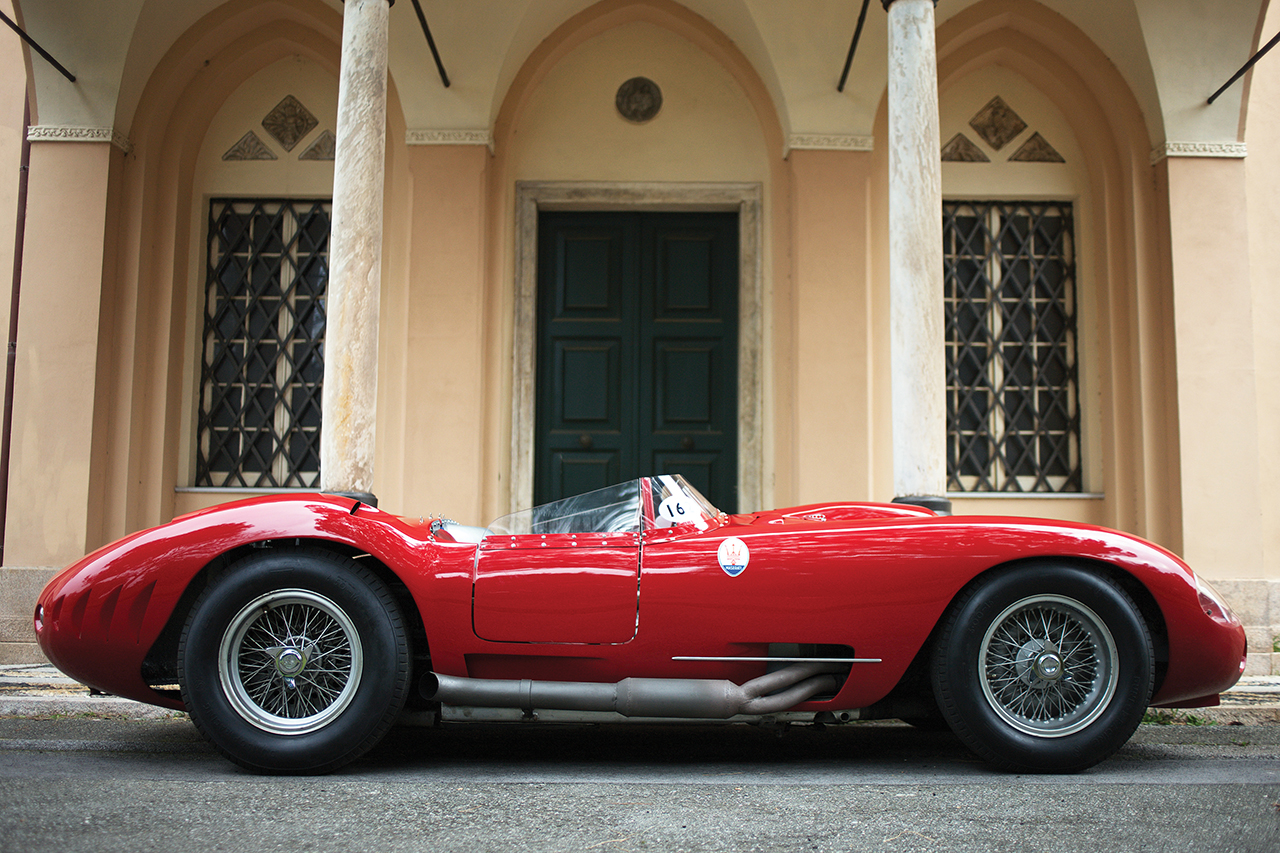Magnificent and challenging
The 450S epitomizes the courage and vision of Italy’s carmakers in the 1950s
Photo credit: RM Sotheby’s, Wheelsage
Enzo Ferrari was not at all amused when Maserati fans once parked a cartload of fodder in front of the Scuderia headquarters in Viale Trento Trieste, with a sign saying: the “Cavallino” (horse) is weak, give it some food! In the 1950s, Maserati was Ferrari’s great rival. Indeed, in that period, Maserati played a part in Fangio’s 1954 World Drivers’ Championship victory, and then went on to take the 1957 title with the same driver. Back then, of course, road racing was hugely popular, and Maserati, technologically avant-garde and fielding its Sport models — the 200S (2000cc) and 300S (3000cc) —, enjoyed considerable success. What is more, even though Ferrari was by this time producing its cars at Maranello, the Viale Trento Trieste site, still the historic headquarters of this famous brand, was situated just a few minutes’ walk away from Via Ciro Menotti, where Maserati had (and indeed still has) its headquarters and production facilities.

This background serves to underline the significance of the birth of certain vehicles, in this case the Maserati 450S, which was produced from 1956 to 1958. But first, another premise: the 450S was a truly magnificent car, a bold evolution of the equally beautiful, but less hefty, 300S. The latter stood out for its excellent weight distribution, which was achieved thanks to its rear-mounted axle transmission (transaxle) with gearbox/differential unit, and its drive shaft, which was positioned next to the driver in order to move backwards, and lower, the center of gravity. All this, and an excellent 6-cylinder in-line engine, was combined with a very low weight thanks to the trellis chassis construction and Fantuzzi aluminum body.

At that time, Maserati was able to count on great drivers, such as Fangio, Moss and Jean Behra, and in 1956 the company tried assembling a 4500 V8 engine, delivering over 400 HP, on a modified, longer-wheelbase 300S. However, it was immediately clear that the sheer power of the engine was incompatible with the chassis of the 300, which could not guarantee the necessary strength and rigidity. Therefore, a new chassis was created, based on that of the 300, but dimensioned for the new V-engine, and therefore able to cope with the stresses associated with its torque and power. The new chassis could also carry a body very similar to that of the 300. From the outset, the new car proved highly competitive, but also challenging to drive. Its successes — its first major victory was at the 12 Hours of Sebring, valid for the Sport World Championship — were interspersed with disastrous accidents that saw cars written off.

Moss would tell of how he risked his life at the 1957 Mille Miglia when, together with his trusted partner Jenkinson, he set out to beat his own record, set two years earlier in a Mercedes: “It was just as well the brake pedal went at a point where I had plenty of room and wasn’t going too fast, otherwise heaven knows what would have happened” he told us.
Despite these mishaps, the 450S remains a milestone in motoring history: it was the first European car to follow in the American tradition of hugely powerful cars. It is therefore hardly surprising that it notched up most of its successes in America where there was plenty of excellent fodder to feed a powerful engine!
